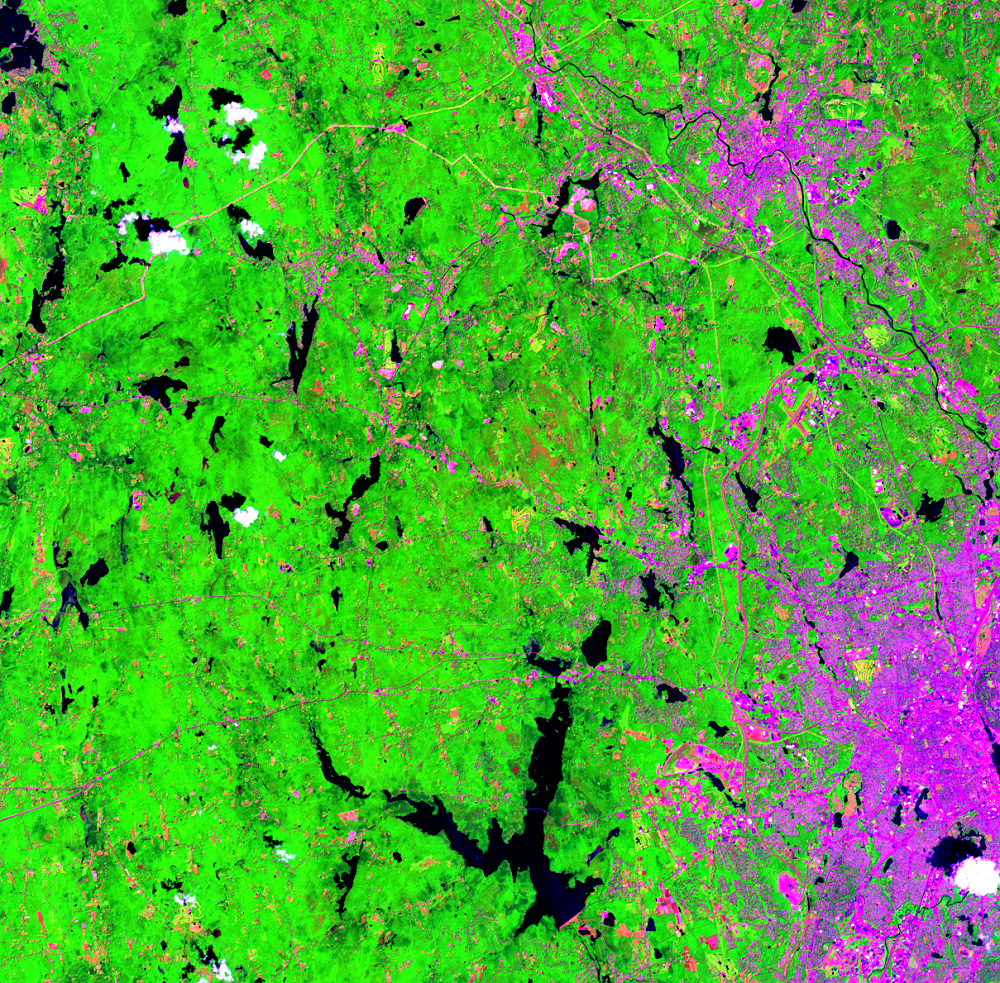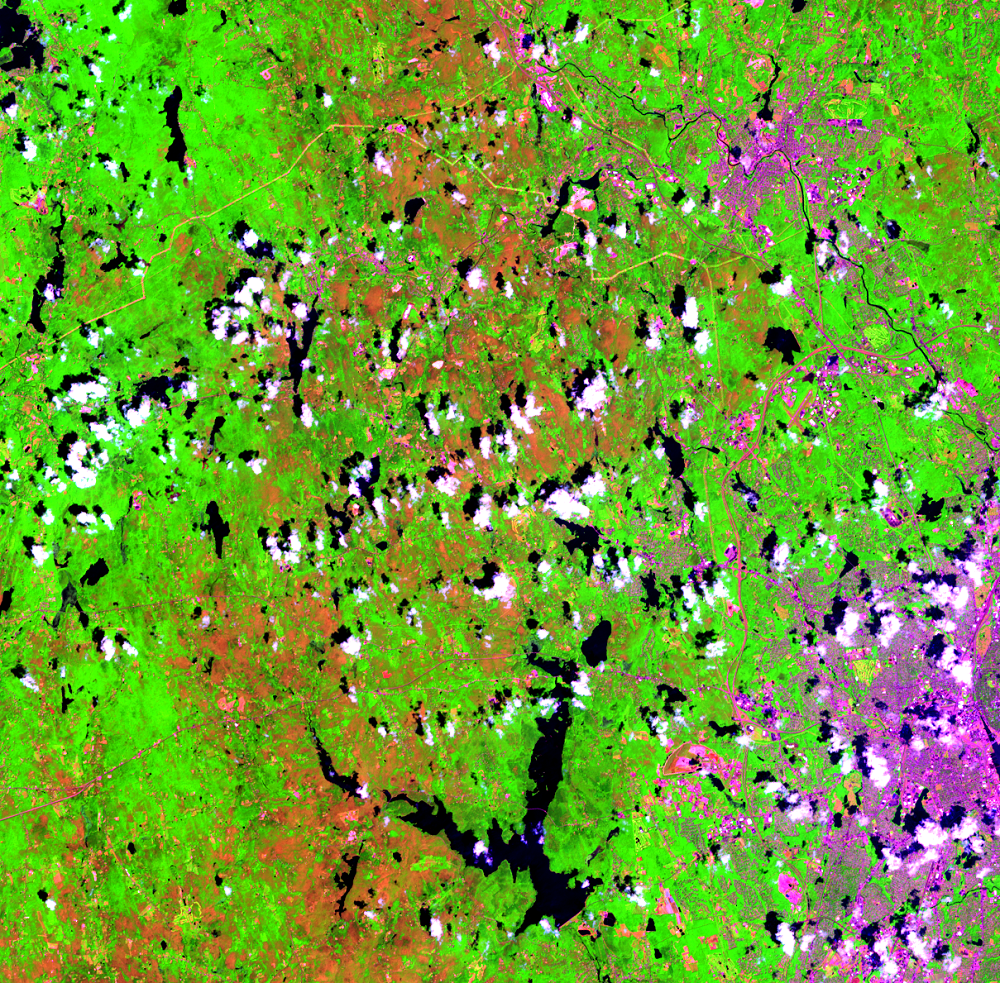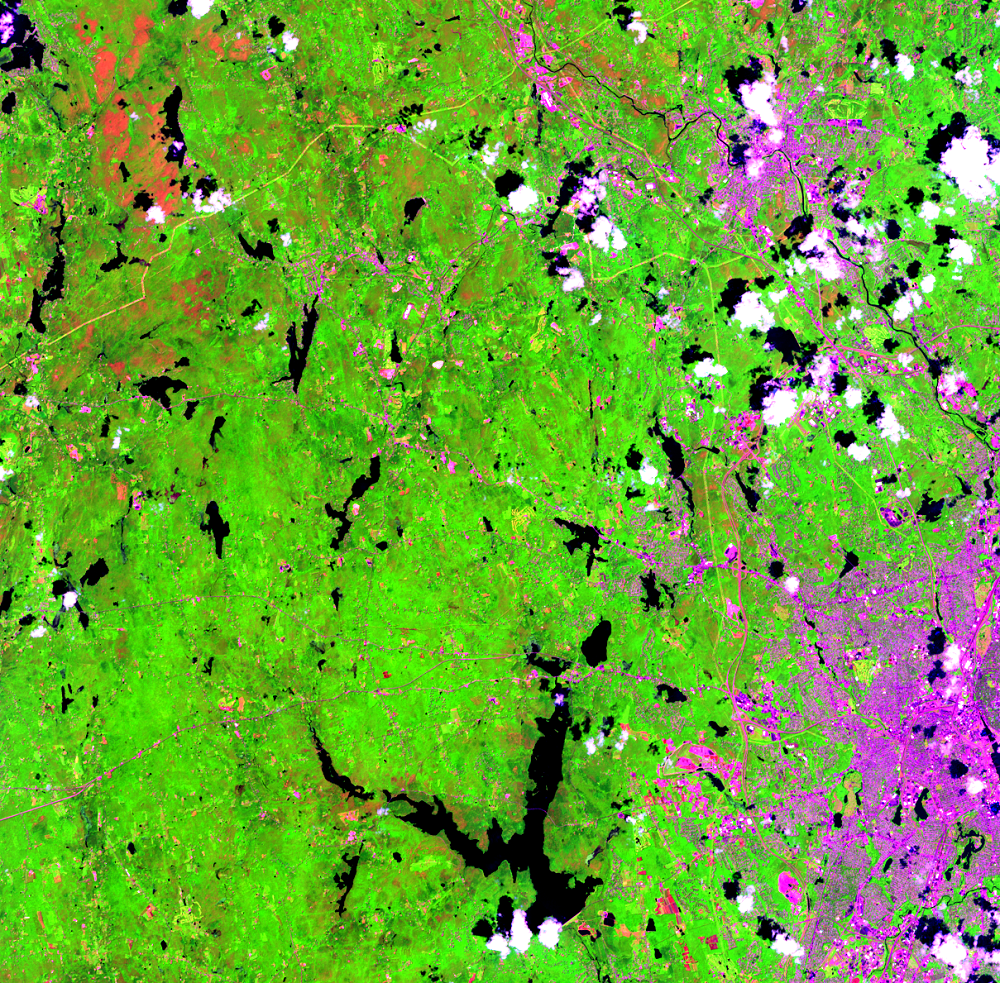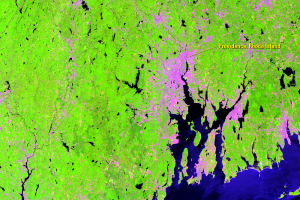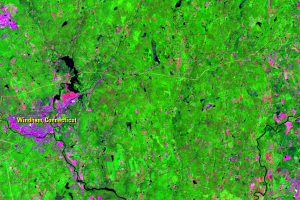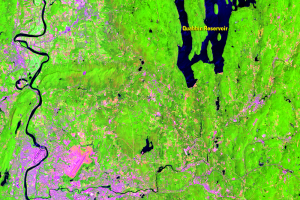
Damage
Earth Resources Observation and Science (EROS) Center - Earthshots
Gypsy moth caterpillars devour the leaves of hardwood trees, causing the greatest damage in late June as the larvae reach maturity. The caterpillars are hungry little buggers, and they’re not picky eaters. Even though they prefer oak and aspen, they feed on other deciduous trees such as maple, birch, poplar, willow, apple, and hawthorn, and can go after coniferous trees during a large outbreak.
During a dense population boom, they eat all the leaves on a tree and can even defoliate entire stands of trees. Beginning in 2016, the combination of visible and infrared imaging from Landsat revealed the extent of the damage the outbreak has caused.
Healthy forest is bright green, but as the time series progresses, much of the green turns to faded brown as the infestation spreads.
Though gypsy moth outbreaks are a fairly regular occurrence in the more southern portion of their invaded range, this outbreak was the first time gypsy moths caused significant defoliation in New England since the 1980s.
How did they get here?
An amateur entomologist Etienne Léopold Trouvelot brought gypsy moth eggs from France to Massachusetts in 1869. He was conducting experiments with the eggs possibly to see if the gypsy moth could be an alternative to the native silkworm. The insects somehow escaped from his home and have affected the forests of the Northeastern United States ever since.

